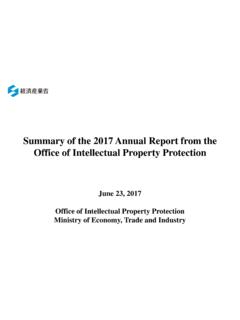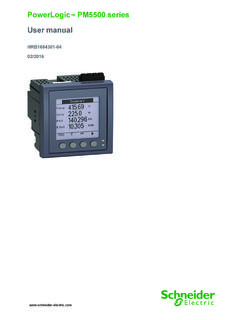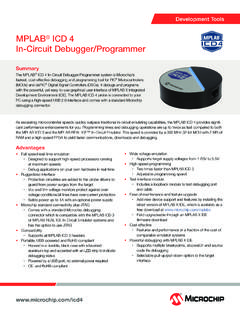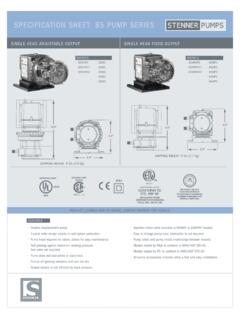Transcription of Trademark Protection in Europe - BARDEHLE …
1 Trademark Protection in Europe Requirements for Trademark Protection in Europe5 Overlap of Trademark law and other IP rights7 Trademark law in Germany and international Trademark law7 Procedure of obtaining Trademark rights8 Exclusive rights conferred by registration9 Trademark Protection through registration or use9 Invalidity and revocation proceedings against registered Community or German trademarks10 Enforcing Trademark rights in Europe (main proceedings)10 Main procedural principles12 Claims on the merits in proceedings (remedies)13 Length of proceedings and time limits15 Costs16 Enforcing design rights in Europe (preliminary proceedings)16 General remarks16 Specific procedural principles and timing17 Preliminary injunctions and main actions4 IntroductionTrademark Protection is available for any sign which is capable of distinguishing the goods and services of one enterprise from those of others.
2 These signs include, inter alia, words, including personal names, letters and numerals, figurative signs ( device marks ), colours and colour combinations, three-dimensional shapes, including the shape of the goods or their packaging. Different from registered Trademark rights, Protection of use-based Trademark rights has not been harmonised in Europe and is thus subject to the laws of each Member State. Trademark Protection is the most significant part of the law relating to the Protection of distinctive signs. Distinctive signs include, in addition to trademarks, trade names, which identify and distinguish undertakings, trade dress, which provides for the Protection of the overall appearance, presentation or get-up of a product, and geographical indications, which identify and distinguish goods or services as to their geographical are IP rights constituting often some of the most important and valuable assets of their proprietors.
3 Trademarks represent the goodwill of enterprise which makes use of them. Trademarks are essential in market eco-nomies, fostering market transparency, permitting their owners to create a direct link with consumers, allowing consumers to identify and memorise the products and services they prefer, thus contribu-ting to a system of fair and undistorted Requirements for Trademark protec-tion in EuropeTrademark law in Europe comprises both European Union (EU) legislation as well as the national laws of the 27 Member States of the Union on the Protection of Community Trademark Regulation (CTMR) of December 1993 (in 2009 codified as Re-gulation [EC] No. 207/2009) allows for the registration of Community trademarks offering Community-wide Protection .
4 Community trade-marks are administered by the EU s trademarks and designs office, the Office for Harmonization in the Internal Market (OHIM), located in Ali-cante, Spain. The CTMR coexists with national trademarks laws, which have been substantially harmonised as regards substantive law in 1988 by the First Directive to approximate the laws of the Member States relating to trademarks (Trademarks Directive) (in 2008 codified as Directive 2008/95/EC). With the three Bene-lux countries having established a common Trademark system in 1970, there are 25 different national Trademark regimes in the European Union. The German Trademark Act of 1994 has implemented the Directive but is, in addition, a comprehensive law providing for Protection of all distinctive requirements for obtaining Trademark Protection through registration in Europe are substantially the same in all Member States and in the Community Trademark Protection is available for all kinds of signs capable of distinguishing goods or ser-vices of one undertaking from those of others.
5 These signs include traditional marks such as words, names, and figurative marks, but also to shapes and colours and colour combinations, and even non-visible signs such as sounds. To be entitled to Trademark Protection a sign must be capable of being represented graphically. Case law has interpreted this condition strictly and requires the representation to be clear, precise, self-contained, easily accessible, intelli-gible, durable and is not available for marks which are devoid of distinctive character, which are descriptive of characteristics of the goods or services, such as their nature, quality, or geographical origin, or which are generic. Whether these conditions are met is examined by taking into account the perception of the Requirements for protection6public addressed by the mark and the goods or services for which Protection is claimed.
6 A mark that is excluded from Protection as not distinc-tive, descriptive or generic may nevertheless be protected if distinctiveness has been acquired through use ( secondary meaning ). For Com-munity trademarks distinctiveness through use must be shown for those parts of the European Union where the obstacle existed. Furthermo-re, Protection is excluded for marks which are deceptive or against public order or morality, or where a mark conflicts with an earlier protected geographical indication or appellation of Protection is available for three-dimensional shapes resulting from the nature of the goods themselves, for shapes necessary to obtain a technical result and for shapes giving substan-tial value to the goods for which they are sought to be addition to these absolute grounds of refusal, earlier rights, , rights acquired prior to the filing or priority date of the later mark, constitute relative grounds of refusal or invali-dation.
7 These earlier rights are earlier registered trademarks, earlier trademarks acquired on the basis of use and other trade identity rights such as trade names and trade dress, as well as any other earlier right that may conflict with a trade-mark, such as rights in names or images, design rights or Community Trademark system is based on the principle of the unitary character of a Community Trademark . Thus, any absolute ground existing in a part of the European Union will result in a refusal or invalidation, as will any earlier right of either Union-wide or Member State-wide scope. In the national systems, ear-lier Community trademarks constitute earlier rights; in other respects, the obstacle must exist in the Member State in question.
8 Accordingly, a mark not registerable as a Community trade-mark or in a particular Member State because of its descriptive character may well be registe-rable in other Member States where a different language is this presentation, we will cover European and German Trademark Overlap of Trademark law and other IP rightsMany signs, such as logos, shapes and images, may in addition to Trademark Protection qualify for other IP rights, particularly copyright and design Protection . For example, the shape of a bottle or a device that may be registered as a Trademark may also be protected as a design under the Community Designs Regulation pro-vided that it is new and has individual character.
9 Trademarks may also fall within the subject matter of copyright law. Whether that can be the case, depends on the applicable laws of the Member States of the EU. Contrary to design or Trademark law, there is no European-wide co-pyright law and the requirements for copyright Protection have not been harmonised. As a rule, Trademark law and other IP rights7for a Trademark to constitute a work protected under copyright law, the mark must be the re-sult of a personal intellectual endeavour which exhibits the imprint of its author s personality. This generally implies a high threshold for pro-tection by requiring a relatively high standard of Trademark law in Germany and inter-national Trademark lawThe German Trademark Act ( Markengesetz ) of 1994, which replaced the earlier German Trademark Act dating from the first half of the 20th Century, has also implemented the Trade-marks Directive.
10 Protection of trademarks may also be obtained by means of an international registration. The 1989 Protocol to the Madrid Agreement for the International Registration of Marks has repla-ced the earlier 1891 Madrid Agreement. The Ma-drid system is administered by the International Bureau of the World Intellectual Property Orga-nization (WIPO). An international registration must be based on an application or registration of the same mark in one of the Madrid Union members and must be filed through the office of origin. Protection may be requested in any other member of the Madrid Union. All EU Member States (except Malta) belong to the Madrid system. The EU joined the Madrid Protocol in 2004.







